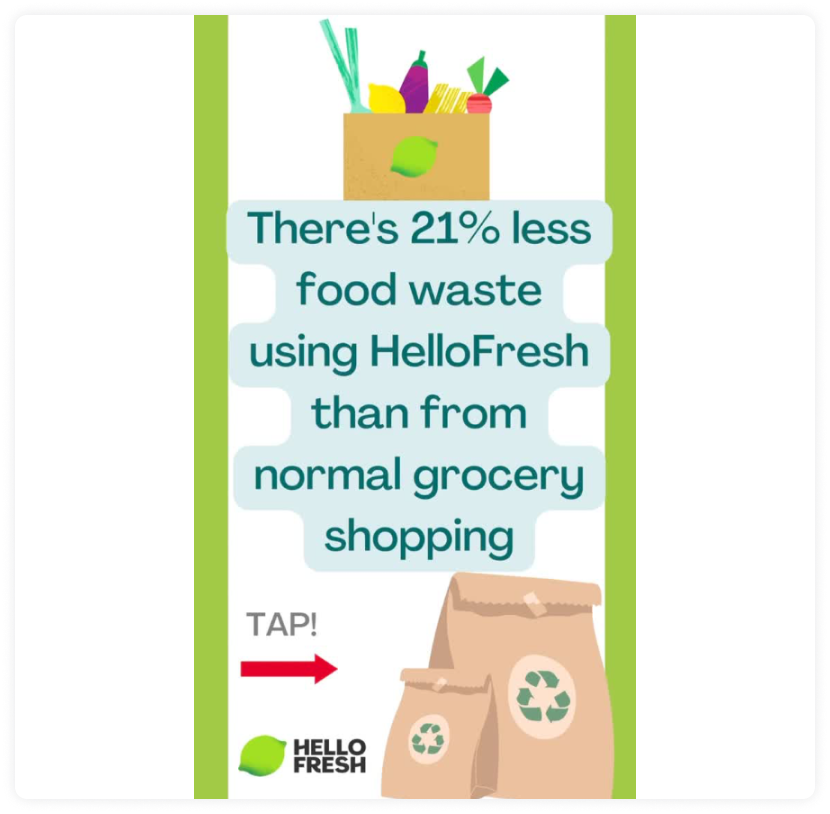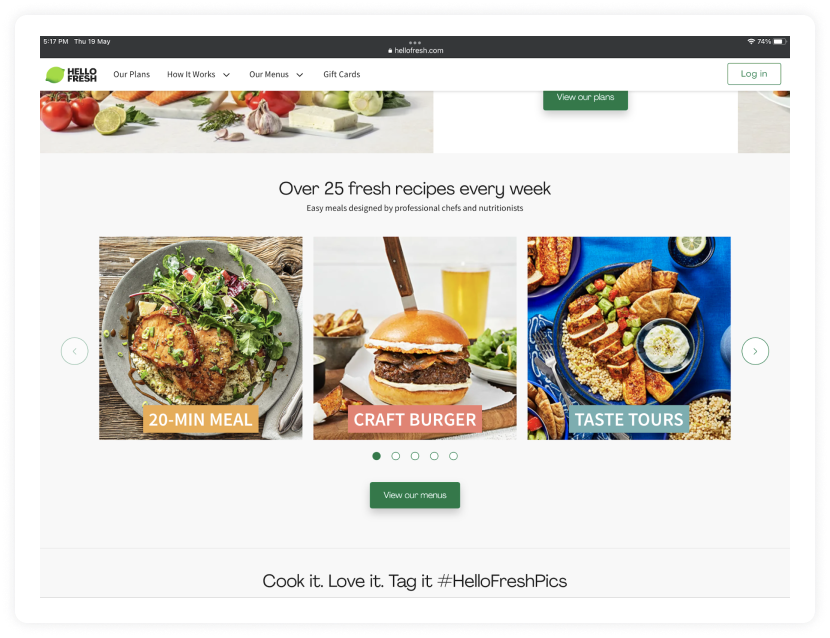What's the first step a business owner needs to take when starting out? It is to identify their target audience. Otherwise, you will waste money marketing to people who have no interest in your product or service.
Did you know that nearly 37 billion dollars are wasted on ad spend every year on ads that were not tailored for the target audience? That's crazy.
We don't want you to waste your money. So we created this guide to enable you to find your target audience to ensure you get optimal results from your marketing endeavors.
Table of contents
- What is a target audience?
- Difference between target audience, buyer persona & ideal customer profile
- Why should you define your target audience?
- Categories of target audience
- How to find your target audience?
- Target audience examples
- Target your audience today
What is a target audience?
The target audience for a brand can be defined as a broad group of people who are likely to be interested in the company's products or services and become a customer.
You should consider the below-mentioned factors when determining your target audience.
Age
Gender
Location
Occupation
Industry
Interests, etc.
Now, having a target audience doesn't mean that you can't sell to everyone. Anyone could buy or use your product. Having a target audience helps you optimize your marketing strategy to get more sales.
For example, if you sell sustainable clothing, it doesn't mean that you can't sell to everyone. However, you can't get everyone to buy from your brand because sustainable clothing is usually a little expensive.
So, you'll be able to get more sales if you market to people who are passionate about climate change, sustainability, zero-waste, etc. They relate to your brand values and will buy from you despite the higher cost.
Difference between target audience, buyer persona & ideal customer profile
Most people get confused between target audience, buyer persona, and ideal customer profile. Here's how the three terms are different:
| Target Audience | Buyer Persona | Ideal Customer Profile (ICP) |
|---|---|---|
| Target audience is the description of a broad group of people who are likely to be interested in the product and buy it. | A buyer persona describes a fictional person who would buy from you. | ICP is the description of the perfect customer for your company or product. |
| Focuses on a group of people who have similar characteristics. | Focuses on the details of one potential customer. Doesn't have to be an ideal or perfect buyer. | This perfect customer can be both a company and an individual. |
| Gives you a guideline on who to advertise to, which platforms, and the timing. | Gives you a guideline for talking to your potential customers (messaging, values). | These people will likely use your product regularly and reap its benefits. |
| Characteristics considered while finding the target audience: |
Characteristics considered while creating a buyer persona: |
Characteristics considered while creating an ICP: |
| Helps you narrow down a group of people to target to get good engagement and conversions. | Helps you understand their goals and pain points to market effectively. | Gives you a guideline on who you should target. And also helps you improve your product to satisfy your ICPs needs. |
Why should you define your target audience?
We have previously discussed some of the benefits of defining your target audience. Here's a compilation of all the benefits:
Defining your target audience will help you find your core customers and better understand them and their needs.
It'll help you tailor your marketing and advertising to be more personal for your target audience.
And, it'll also help you save money as you are only creating marketing creatives/resources tailored to your target audience rather than everyone. And this will ultimately increase your return on investment.
Categories of target audience
Previously, we talked about how you can define your target audience based on demographic and behavioral traits. Here are a few more categories you can consider to define your target audience:
Purchase intention
You can segregate your target audience based on their purchase intention to better target what they are looking for. For example, if you sell electronic devices and some people want to buy a laptop, you'll keep them as a separate segment of your target audience. Later you can target them with ads showing your laptops.
Also, you can look at who has the buying power and target accordingly. For example, if it is a company, the manager controls what things to buy rather than an employee.
Interest
You can also segregate your target audience based on their interests, hobbies, etc. This can help you connect with your audience better in a more authentic way and gain their trust.
For example, if many of your potential audiences are interested in gardening, you can incorporate something related to it into your marketing campaign to appeal to them.
Subculture
Lastly, you can categorize your target audience based on subcultures. A subculture is a community of people within a culture who differentiate themselves from the original culture. Jibber jabber. Confusing? I know. So let me break it down with some examples.
There are various subcultures in Western and Eastern cultures like hip hop, skater, bodybuilding, otaku, cosplay, sneakerheads, etc.
I think you get the picture. So, you understand that if you create a targeted marketing or advertising campaign for each subculture, you are bound to get better results.
How to find your target audience?
Now that you understand the basics of having a target audience, let's look at the different methods you can use to find your target audience.
1. Survey your existing customers
The best way to determine who will likely buy from you is to look at who is already buying from you. Who are they? Where do they live? What do they do? You can get the answers to these topics by engaging with them directly or sending them surveys.
Create a survey to get answers on their demographic traits, behavioral traits, and experience with the company. And the answers to these questions should give you an idea of what your target audience would be like.
You can survey your customers directly on the website, on social media, or by email. Whichever seems appropriate for your business. If you find that people are not completing the surveys, you can offer them some incentives to complete the survey.
Checkout more AMP email survey templates
You can also use interactive surveys to increase your survey responses within the emails you send. Book a demo to understand how you can incorporate interactive surveys in your emails.
Related guide: Conducting Surveys With Interactive AMP Emails
2. Analyze your website traffic
Google Analytics is a strong website analytics tool that you can use to get more factual data about your website users.
Here is the type of data you can get about your website users/visitors:
Age
Gender
Location
What channels do people come from
What kind of content do they like on your website
And so on.
Using this data, you can stipulate their interests, challenges, etc., which will be the possible interests of your target audience. You can also enable cookies, pixel tracking, etc., to collect more information about your website visitors.
3. Analyze social media insights
We just looked at website analytics; now, let's look at your social media analytics to learn more about your audience. And different social media platforms have different types of audiences. Based on which social media platforms you get the most engagement on, you can get a general idea of who your audience is.
For example, if you get more engagement on LinkedIn, your audience will likely be working professionals aged 18 to 55. Whereas if you get the most engagement on TikTok, your target audience is likely students who are either teenagers or in their 20s.
You can also look at what topics get the most engagement to determine your audience's interests. You can use this info to create similar content that your audience wants to see.
And if you do a little bit of healthy stalking, you can find out at what stage of life they are - single, married, kids, etc., language, location, and what other kinds of accounts they engage with on social media. Don't be creepy, though. Just a glimpse should be enough.
4. Market research
Ideally, you would be doing this at the beginning before creating your company to look for the holes in your competitor's products or services. And finding out how you can fix them and provide a better product or service for your customers. You can then promote your unique value proposition while marketing to get better results. You can use Spartoro, Traction, and Crunchbase to conduct your research.
Related guide: How to Create Interactive Market Research Forms with Mailmodo
5. Check out the competition
In this step, you won't be checking for flaws as you did with the market research. Rather you'll be looking at how your competition markets itself, who is their target audience, which platforms they use, etc. Most of it could overlap with your target audience, so it's helpful to look at what others are doing and learn from it.
Target audience examples
Let's look at the brand HelloFresh to see who their target audience is and how they have tailored their marketing around that.
HelloFresh is a recipe subscription service that provides pre-measured meals and the recipe directly to people's doorstep.
Now their target audience would be
People from ages: 18 to 40.
Living in the USA, UK, CA, Germany, France, Italy, New Zealand, and so on.
People who want a change from their boring daily meals.
People who don't want to waste a lot of food.
Those who haven't got time to cook meals from scratch.
People who are studying in a college or are working full time.
Social media: Instagram, Pinterest, YouTube.
Living alone, a family of 2, 3, or 4.
Want to eat healthily.
And now, this is what their marketing looks like:
Instagram story:
Promotes their ability to reduce food waste, aligning with their target audience's wants.

Their website:
Showcasing new recipes are provided every week, which appeals to their target audience who want to spice up their meals.

So, by now, you get it. They have found out who their target audience is and have tailored all their marketing strategies to reach them and provide them with what they want.
Target your audience today
And voila, that's all there is to find your target audience. Go on. Analyze the data and find out who your target audience is and how you can change your marketing strategy to attract them.
After discovering your target audience, you will need to create awareness among them about your brand and what you do. So, we have recently published a guide to help you increase your brand awareness amongst your target audience.
What you should do next
Hey there, thanks for reading till the end. Here are 3 ways we can help you grow your business:
Talk to an email expert. Need someone to take your email marketing to the next level? Mailmodo’s experts are here for you. Schedule a 30-minute email consultation. Don’t worry, it’s on the house. Book a meet here.
Send emails that bring higher conversions. Mailmodo is an ESP that helps you to create and send app-like interactive emails with forms, carts, calendars, games, and other widgets for higher conversions. Sign up now and send 10k free emails/month. Sign up here.
Get smarter with our email resources. Explore all our knowledge base here and learn about email marketing, marketing strategies, best practices, growth hacks, case studies, templates, and more. Access guides here.

